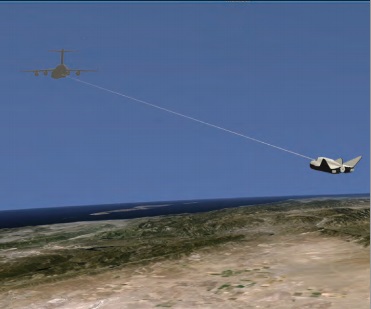Chapter: Engineering Successes, new invention technology, Research project papers,
Dope on a Rope 2: Development of a Dream Chaser Aero Tow Simulation

Dope on a Rope 2: Development of a
Dream Chaser Aero Tow Simulation
Armstrong
innovators have developed a lifting-body aero tow simulation to determine
feasibility and procedures for towing the Dream Chaser Flight Test Vehicle
(FTV) to an altitude of 30,000 feet. The Dream Chaser FTV is a full-scale,
full-weight, single-seat, manned glide test spacecraft and was designed to
conduct approach and landing tests. The aero tow concept calls for a large
transport-size jet aircraft to tow a piloted commercial re-entry vehicle into
the air with a long robust towline. At a predetermined altitude, the re-entry
vehicle separates from the tow aircraft
and
is landed by the astronaut on board. The tow concept was successfully
demonstrated in the late 1990s in the Eclipse Project with F-106 and C-141
aircraft.
'Dope on a Rope' was the unofficial Eclipse
Project name, a moniker developed in jest to teasingly poke fun at the
intelligence of the project pilot. The name stuck, and 'Dope on a Rope 2' has
been adopted as the unofficial project name for the follow-on work.
Work
to date: The Armstrong team linked an existing
simulation of the HL-20 lifting-body aircraft and a C-17 to
determine feasibility. The simulation has been updated with models of the Dream
Chaser FTV, and a cockpit with representative windows has been built. The
simulation is now being used to develop tow profiles and procedures, evaluate control
law changes, and determine potential tow vehicles. It is also being used to
validate the rope model for stability and control analysis.
Looking
ahead: An important role of the simulator is to
evaluate different aircraft as Dream Chaser tow planes. Simulations
of potential tow aircraft can be linked to evaluate performance and tow
efficiency. When a tow aircraft is selected, the simulation will be used to
develop tow techniques and procedures.
Partners: Sierra
Nevada Corporation and U.S. Air Force
' As
a result of evaluations in the Aero Tow Simulator, Sierra Nevada Corporation
has made Aero Tow the primary method of getting the Dream Chaser FTV to
altitude for the approach and landing testing to be performed in 2015-2016. The
Aero Tow Simulator will play a vital role in developing towing techniques and
procedures,
tow mode flight control development, and astronaut training. '
Bruce Cogan, PI
Engineering Successes
Armstrong's Research and Engineering
Directorate is responsible for the overall engineering content of flight
research projects. Our engineers provide technical expertise in aerodynamics;
guidance, navigation, and control; propulsion; static and dynamic structures;
flight hardware and software; flight and ground test instrumentation and data
systems; and system engineering and integration. They apply their expertise
across the spectrum of Armstrong's many activities and also support the
development and continual evolution of engineering tools and test techniques.
Here are highlights from a few recent and particularly notable engineering
success stories.
Related Topics